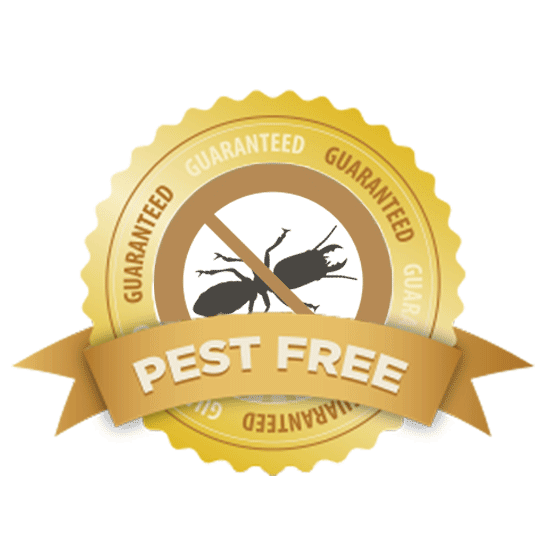Bed Pest Therapy Breakdown: Contrasting Chemical Vs. Non-Chemical Solutions
In the realm of insect control, specifically when dealing with the consistent concern of bed bugs, the option between chemical and non-chemical therapy services can be an essential one. Both approaches provide distinct advantages and disadvantages, affecting variables such as performance, safety considerations, and total cost. By analyzing the nuanced information of each approach, a clearer understanding of which path to seek in attending to a bed pest problem can be achieved.
Efficiency of Chemical Treatments
Chemical therapies for bed insect problems have actually been extensively acknowledged for their potent and rapid efficacy in eliminating these insects. When thinking about the efficiency of chemical treatments, it is critical to understand that they can offer a quick and thorough solution to a bed pest issue.
Moreover, chemical therapies have the advantage of using residual results, indicating that they can remain to get rid of bed bugs also after the initial application. This recurring action is specifically beneficial in combating any kind of prospective re-infestations. In addition, the rapid activity of chemical treatments can bring alleviation to individuals dealing with extreme bed pest infestations, permitting them to regain control of their home rapidly.
Safety And Security Worries With Chemical Solutions
One vital facet that calls for careful consideration when making use of chemical services for bed insect treatment is making sure the safety and security of owners and the environment. While chemical therapies can be reliable in eradicating bed insects, they may position dangers otherwise managed effectively. Among the key safety and security worry about chemical remedies is the possible harm they can trigger to human health and wellness. Exposure to particular chemicals made use of in bed insect therapies can result in breathing issues, skin irritation, or various other damaging responses, particularly in individuals with pre-existing conditions or sensitivities. Furthermore, improper application or dose of chemical pesticides can lead to toxic residues remaining in the treated location, positioning long-term wellness dangers to residents.
In addition, the environmental effect of chemical services is another considerable factor to consider. Some pesticides utilized in bed bug therapies may be unsafe to beneficial bugs, wildlife, and ecosystems if they leach right into the dirt or water systems. It is necessary to make use of chemical therapies sensibly, adhering to security standards, and thinking about much less toxic choices to minimize these threats and make certain the effective and secure administration of bed insect infestations.
Advantages of Non-Chemical Approaches
Thinking about the potential safety problems and ecological effect associated with chemical remedies for bed pest therapy, exploring non-chemical approaches offers a promising alternative with numerous unique benefits. Non-chemical therapies are eco pleasant, as they do not contribute to air or water air pollution, making them a sustainable choice for pest control.
In addition, non-chemical services can be effective in targeting bed bugs, including hard-to-reach areas where chemical therapies might not pass through - A1 bed bug treatment in charlotte. Techniques such as warmth therapy, vacuuming, heavy steam cleaning, and mattress encasements offer thorough obliteration without the use of damaging chemicals.
Limitations of Non-Chemical Treatments

Additionally, non-chemical treatments typically call for several applications to attain successful eradication. This can be time-consuming and may not click this link constantly assure complete removal of all bed insects and their eggs, particularly in hidden or hard-to-reach locations.
Additionally, the success of non-chemical therapies heavily counts on correct implementation and thoroughness, which can be testing for individuals without specialist expertise. Insufficient application of non-chemical techniques might cause insufficient removal, causing relentless problems and the demand for added treatments.
For that reason, while non-chemical therapies rat pest control have their benefits, it is important to acknowledge these restrictions and consider them when determining the most efficient approach for handling bed insect invasions.
Price Contrast: Chemical Vs. Non-Chemical Options
Offered the restrictions linked with non-chemical therapies, an essential aspect to evaluate in the context of bed insect administration is the expense comparison between chemical and non-chemical options. Chemical treatments typically involve the application of insecticides by professionals, which can range from $250 to $900 per space, depending on the severity of the infestation and the dimension of the area to be treated. On the other hand, non-chemical treatments like heat therapy or vapor can be a lot more pricey, with prices ranging from $1,000 to $6,000 for an entire home. While the first price of chemical therapies might seem lower, numerous therapies might be called for to fully eliminate the infestation, possibly increasing the overall price. On the other hand, non-chemical options might offer a much more sustainable and eco-friendly option, although they can be cost-prohibitive for some individuals. Ultimately, when considering the expense of bed bug therapy choices, it is essential to consider the in advance expenditures against the efficiency and long-lasting sustainability of the picked technique.
Final Thought

Thinking about the potential security problems and environmental effect linked with chemical services for bed insect therapy, discovering non-chemical methods provides a promising alternative with a number of distinctive click to read more benefits.Provided the limitations connected with non-chemical therapies, a crucial aspect to review in the context of bed bug administration is the expense contrast in between chemical and non-chemical choices. In comparison, non-chemical therapies like warmth treatment or heavy steam can be a lot more pricey, with prices ranging from $1,000 to $6,000 for an entire home. While the initial expense of chemical therapies might seem lower, numerous therapies might be required to completely eradicate the infestation, potentially boosting the total price.In conclusion, when comparing chemical and non-chemical bed bug treatment options, it is essential to take into consideration effectiveness, safety, benefits, restrictions, and expense.
Comments on “Professional A1 Charlotte Bed Bug Exterminator - Quality Service Guaranteed”